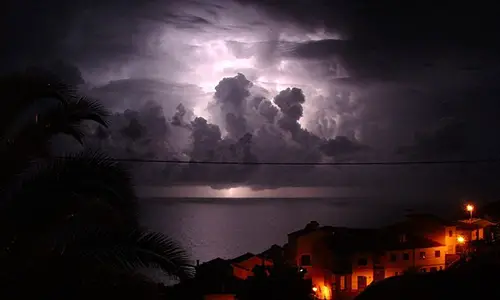1.Hottest and Coldest Temperatures on Earth
The hottest temperatures ever recorded in the world were recorded on 13th September, 1922 in Al Aziziyah in Libya. The temperatures on that day were 57.8 °C. The coldest temperatures that have ever been recorded on planet Earth were −89.2 °C. This was recorded on 21st July, 1983 at Antarctica’s Vostok Station.
2.Highest Rainfall on Earth
The most rainfall that was ever recorded in a span of 24 hours was recorded in Foc-Foc La Reunion on 8th January, 1966. The rainfall measured 71.9 inches and it occurred during a tropical cyclone called Denise. The highest amount of rainfall recorded in a span of one year measured 1000 inches and was recorded in Cherrapunji, India.
3.Heaviest Snowfall
The heaviest snowfall recorded in a span of one year measured 1224 inches and fell on Mount Rainier in the Washington State. This heavy snowfall was experienced between 19th February 1971 and 18th February 1972. The largest snowflake in the world was 20 centimeters thick and 38 centimeters wide. It fell on January, 28th 1887 in Fort Keogh, Montana. The tallest snowman was made by Bethel residents in Maine, U.S. and measured 34.63 meters. Angus was built over 2 weeks and was finished on 17th February, 1999.
4.Most Wet and Most Dry Areas on Earth
The wettest area on earth is Mawsynram, India. This area experiences more than 11 meters of rainfall each year. On the contrary, the driest part of the planet is Antofagasta, Chile. This region experiences less than 0.1 millimeters of rainfall per year and goes for many years without any drop of rainfall.
5.Windiest Part on Earth
The windiest place on the planet is the Commonwealth Bay in Antarctica. Winds in this region travel 200mph. The strongest wind that was ever recorded was experienced on Mt. Washington in New Hampshire in the U.S. The wind was travelling at 231mph. However, the fastest wind speed that was ever recorded is 301±20 mph. This was captured on 3rd May, 1999 in Oklahoma City.
6.Thunderstorms Occurrence
There are about 2000 thunderstorm cells across the world at any given time. In the U.S., more than 100,000 thunderstorms occur each year and more than 16 million thunderstorms are experienced across the planet each year. Out of every 10 lightning bolts that happen, 9 strike land as opposed to oceans. Lightning storms discharge atmospheric electricity that reaches estimated temperatures of 30,000 °C and speeds of 130,000mph.
7.Longest Tropical Storms
A storm called John was the Pacific tropical storm that lasted longest. It continued for 31 days and changed status twice as it crossed the dateline from hurricane to typhoon then back to hurricane. Ginger, an Atlantic tropical storm lasted longest on the Atlantic spanning the open ocean for about 28 days.
8.Tornadoes in the U.S
More tornadoes occur in the U.S. than in any other region in the world. An average of 1200 tornadoes is experienced in the U.S. each year due to its exceptional geography that forms a region at the center known as the Tornado Alley. This area is hit by tornadoes frequently.
9.Tropical Cyclones
Tropical cyclones are also called typhoons or hurricanes. They are characterized by driving rain, strong winds and rough seas. They occur in tropical areas around the world and cause considerable damage in populated regions. Some of the largest cyclones ever recorded are Bhola cyclone in 1970, Typhoon Nina in 1975 and Hurricane Katrina in 2005.
10.Sunniest Place on Earth
The sunniest place on Earth is Yuma located in the State of Arizona. Yuma experiences more than 4000 sunshine hours every year. On the other hand, the South Pole experiences 182 sunshine days each year making it the least sunny area in the world.











Leave a Reply